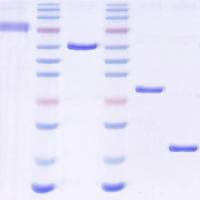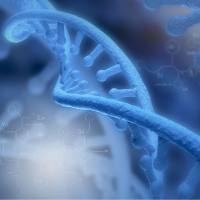Comparative Genomic Hybridization(CGH)
互联网
|
|
Protocol
For the original protocol describing CGH see the article by Kallioniemi et al . For an example of how this technique has been utilized by the NCI Prostate Cancer Working Group see the section on Cell Lines.
DNA RNAProteomic
DNA sequence copy number changes throughout the genome in a single hybridization. CGH is based on co-hybridization of differentially labeled tumor and normal DNA to human metaphase chromosomes.
In a typical experiment:
The tumor DNA is labeled with FITC-dUTP and normal DNA with TexasRed-dUTP prior to hybridization.
Three images of the hybridization, representing both fluorescent labels as well as DNA counterstain (DAPI), are acquired using epifluorescence microscopy and a CCD camera interfaced to a computer.
Subsequently, an image analysis software program is used to calculate green-red fluorescence intensity ratio profiles along all chromosomes.
Regions of the genome that are either gained or lost in the tumor are indicated by the differences between binding of the two labeled DNA s as evidenced by the fluorescence intensity ratio profiles.
Thus, in a single hybridization it is possible to screen all chromosomal sites that may contain genes that are either deleted or amplified in cancer.
DNA sequences is approximately 2-20 Mb. For example, a 10-fold amplification of a 200 kb region should be detectable under optimal hybridization conditions. Early CGH experiments were done using DNA isolated from freshly frozen tumor tissues. However, it has now been shown that DNA extracted from formalin-fixed paraffin-embedded archival tissue blocks can be used as well. Prior to CGH hybridization, DNA can be universally amplified using degenerate oligonucleotide-primed PCR (DOP-PCR), which allows the analysis of, for example, microdissected tumor samples. The latter technique is, however, more difficult and less reliable than CGH without PCR pre-amplification step.









